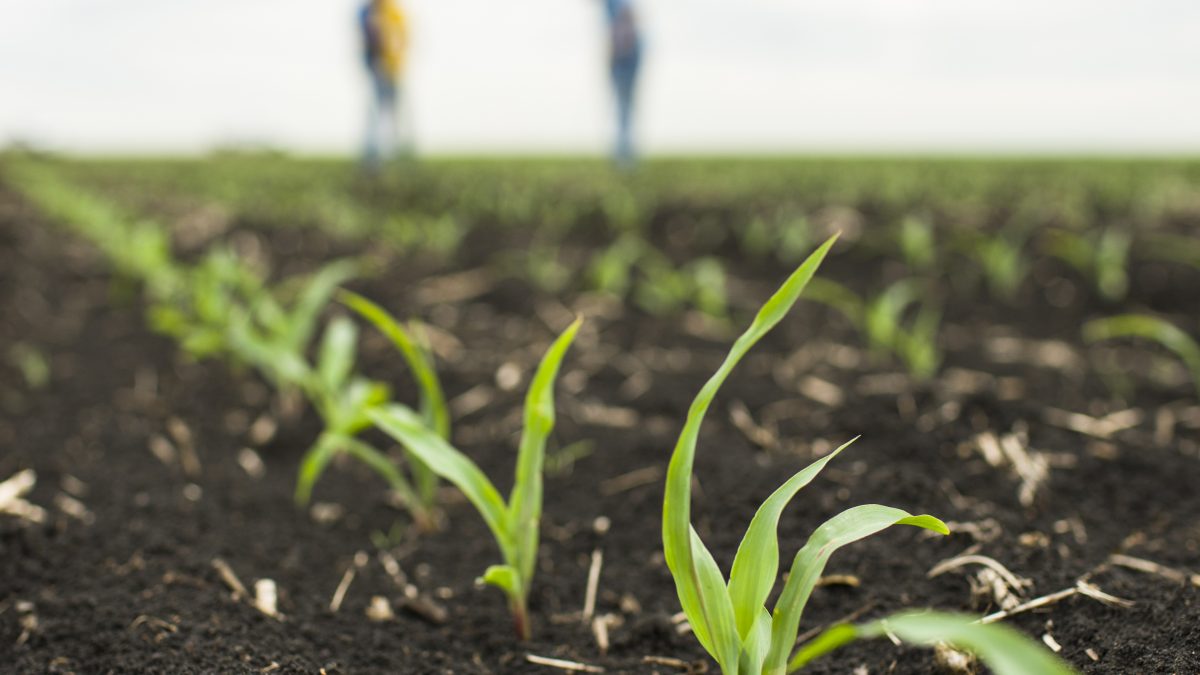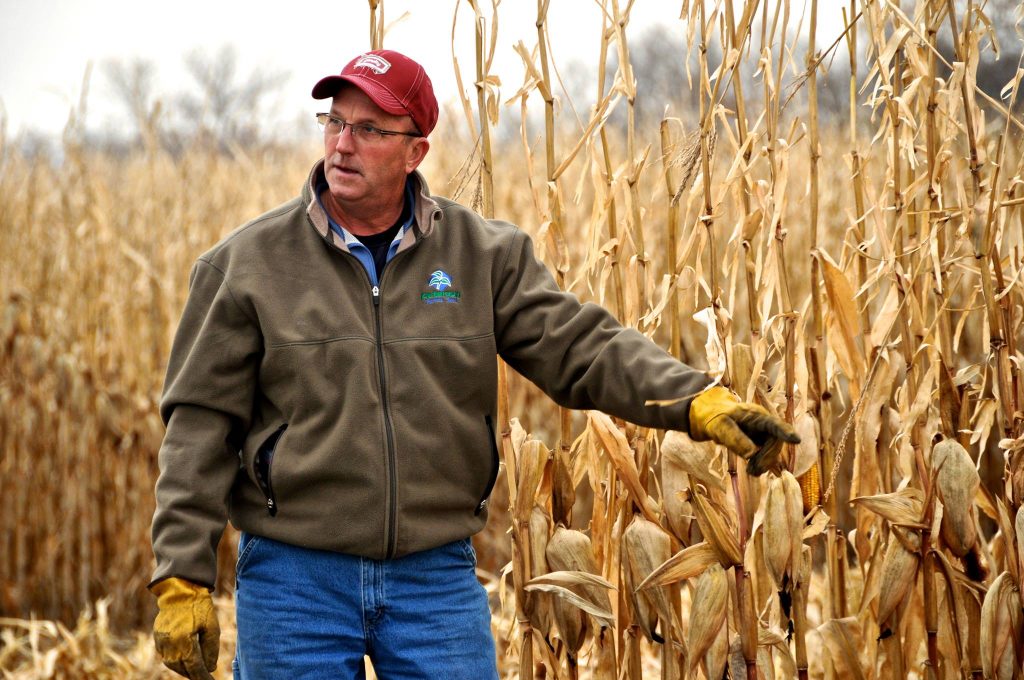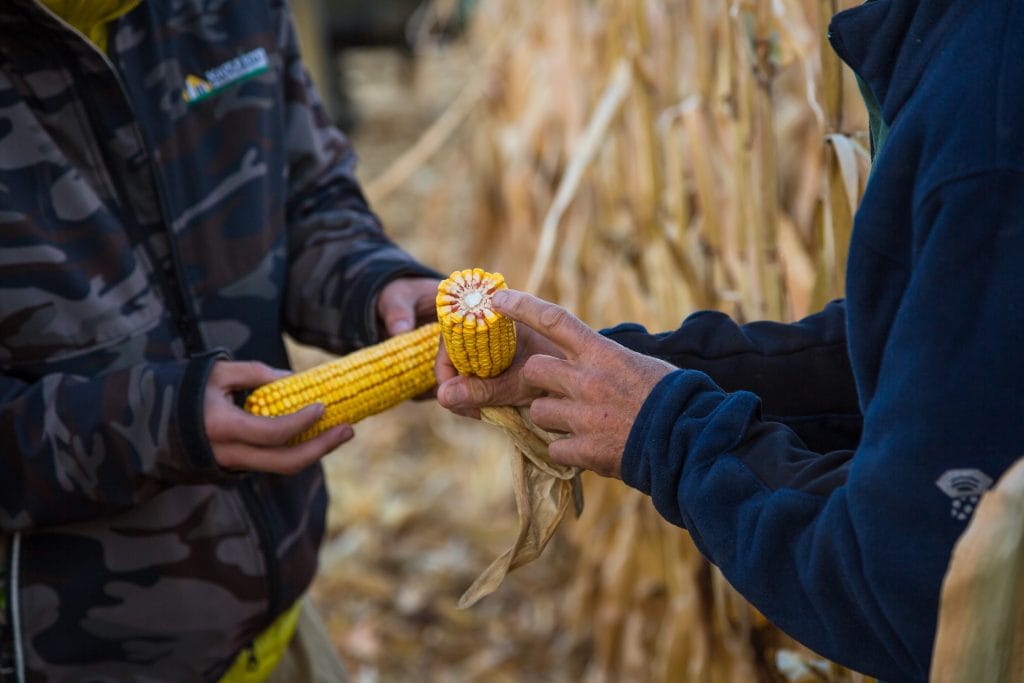Selecting Corn Hybrids: Part Science, Part Art

We’ve gotten many questions over the years on how exactly we choose what to offer in our corn lineup each season. The decision and process of selecting hybrids each year is a combination of deep technical knowledge, repetition of trials over and over again, and also a bit of the ‘art’ of knowing what will work for our region’s farmers.
As is at the base of any selection specialty, it’s always best to start with a solid foundation of deep technical knowledge on the subject: ours being corn. One could say that I eat, breathe and sleep corn – which is maybe why I’ve been affectionately dubbed ‘The Corn Whisperer’ by people at the office.
Beyond being insatiably curious about how corn hybrids can keep improving, my passion for selecting the corn hybrids that make the cut into our lineup comes straight from the farmer’s trust he places in us. They are choosing to trust my team’s recommendations and I take that very seriously. ‘Sell no seed we wouldn’t plant on our own farm’ is a phrase I keep in mind when deciding which hybrids make the cut.
Deep technical knowledge helps us look through a long set characteristics of our potential hybrids to find which will suit our region’s growers the best. Seedling vigor, ear length, dry down, drought tolerance, Goss’s Wilt, stalk rating and Northern Leaf Blight among many others are all evaluated before we make our recommendations.
Using those evaluations, there are seven key things we demand from our potential corn hybrids. For a hybrid to make our product guide it needs to have the ability to:
1. Establish a stand in the spring.
2. Handle our rugged environment during the growing season.
3. Handle the different soil types across our footprint.
4. Stand until the combine gets there.
5. Have heavy test weight.
6. Dry down.
7. Have excellent yields.
Some may look at that list and assume that’s a quick and easy process to check those characteristics and mark it on a chart as if taking a quick inventory. But what is not seen is the multitude of repetition found in our research trials. Repeating the same trials over and over and over again is a key point when making sure our corn lineup is as sound as possible. After harvest has taken place, the work then turns to data.
The few short months that the corn spends growing, standing, and maturing in our test plots might seem like the only time we put in work to evaluate each hybrid against our rigorous standards, but that’s not the case.
I would compare our year to a season of your favorite football team. Sure, the televised games are what is seen by the public and fun to watch, but it’s the hard work behind the scenes in the off-season, such as recruiting players, evaluating last year’s performance, and improving the strength of the team where the real work lies. For us, that ‘off-season’ is the countless hours we spend in the winter pouring over the mountains of data we receive throughout the summer and fall that makes our ‘in-season’ product successful.
We have been very fortunate to have established a strong relationship with corn breeders and technical reps across the industry to guide us along the way for product selection. Because we are independent, our team gathers as much technical and practical information as possible before we make the final decision on products.
With each mile that turns over on my pickup traveling around the region during the growing season, I hope to find the ‘next big thing’ when it comes to our corn lineup. Have we been wrong before when choosing a hybrid? Sure! With the tough farm economy, it’s important to make sure we’re balancing value with affordability while still keeping our quality standards at the height they are. Thankfully, one wrong hybrid does not mean our year’s offerings were a failure. But for every failure, there are multiple successful hybrid selections that make all the hard work and tough decisions worth it.













